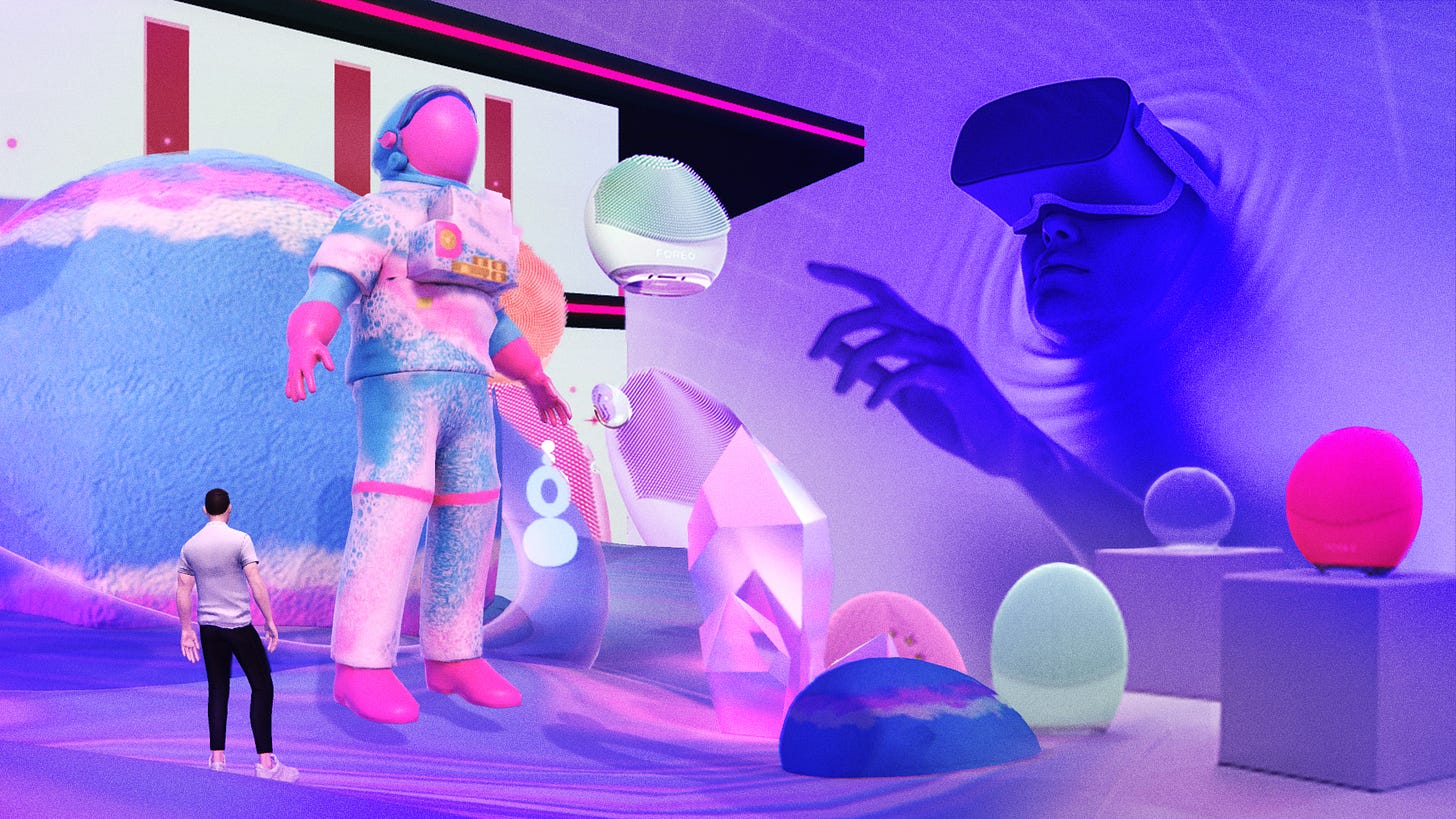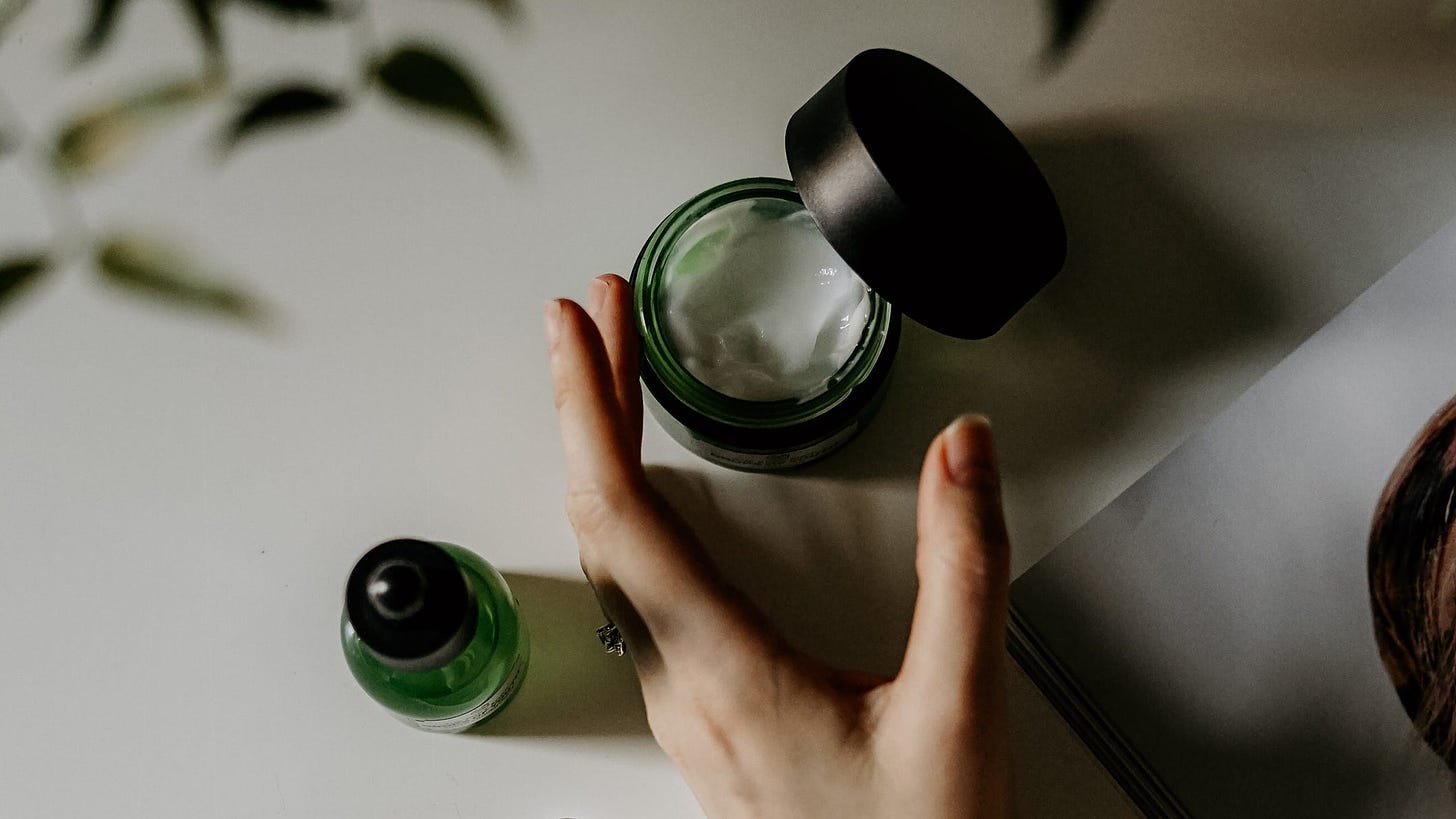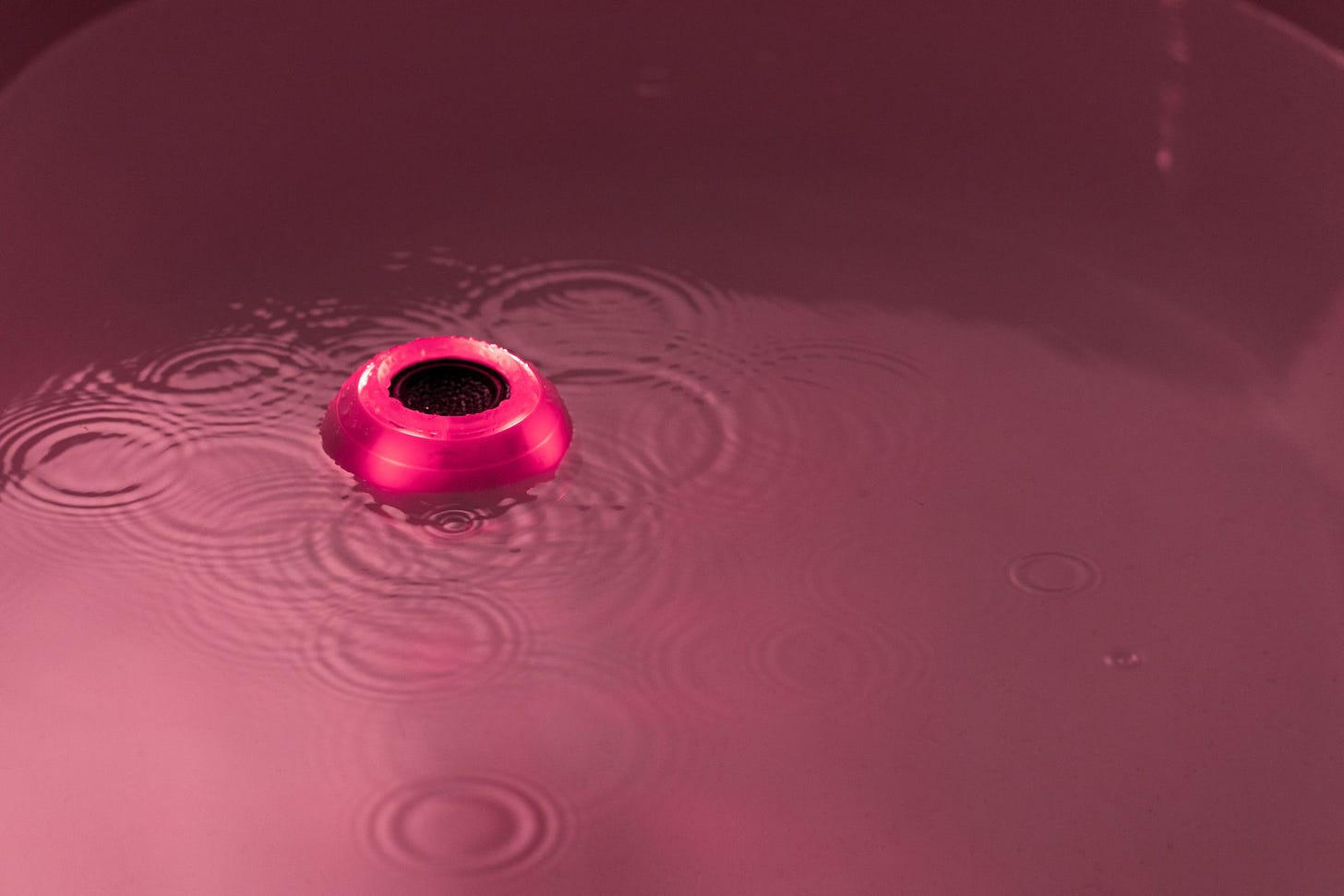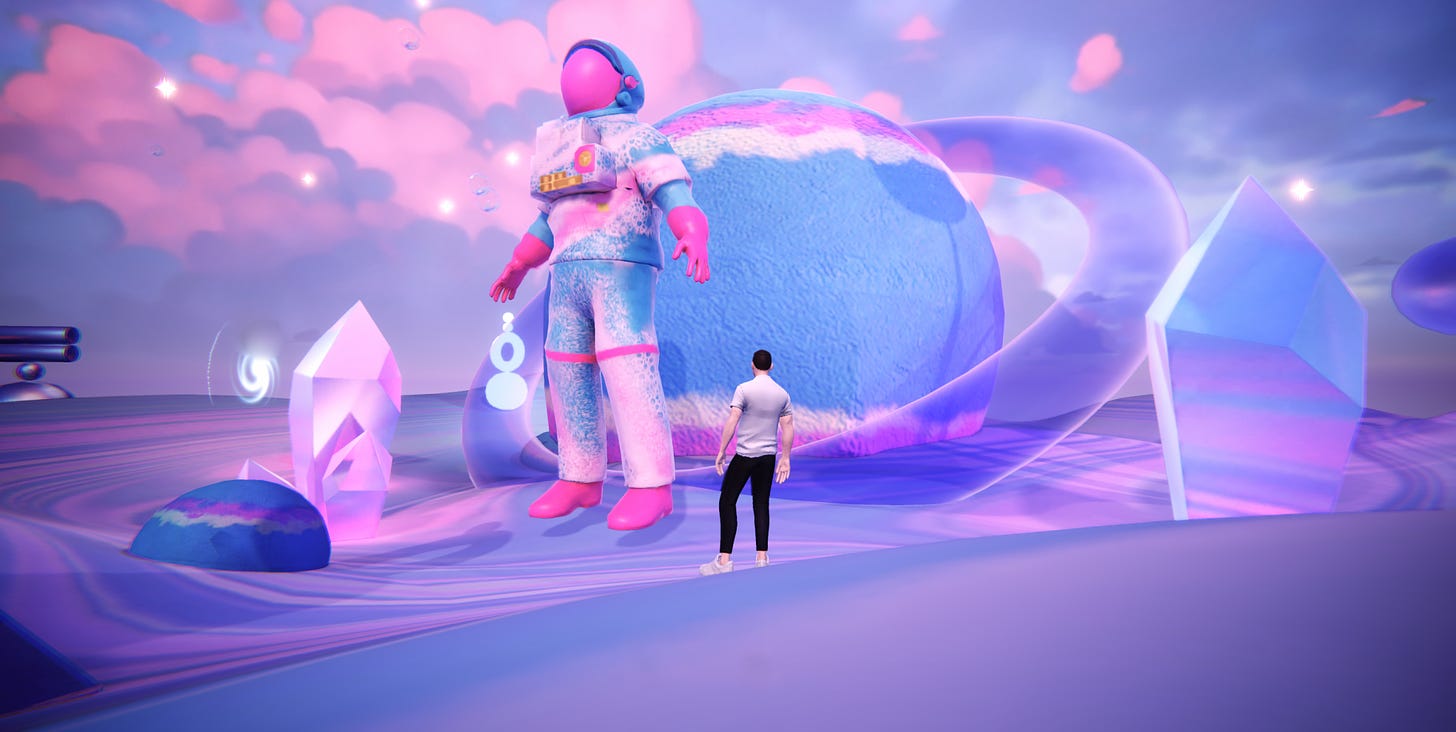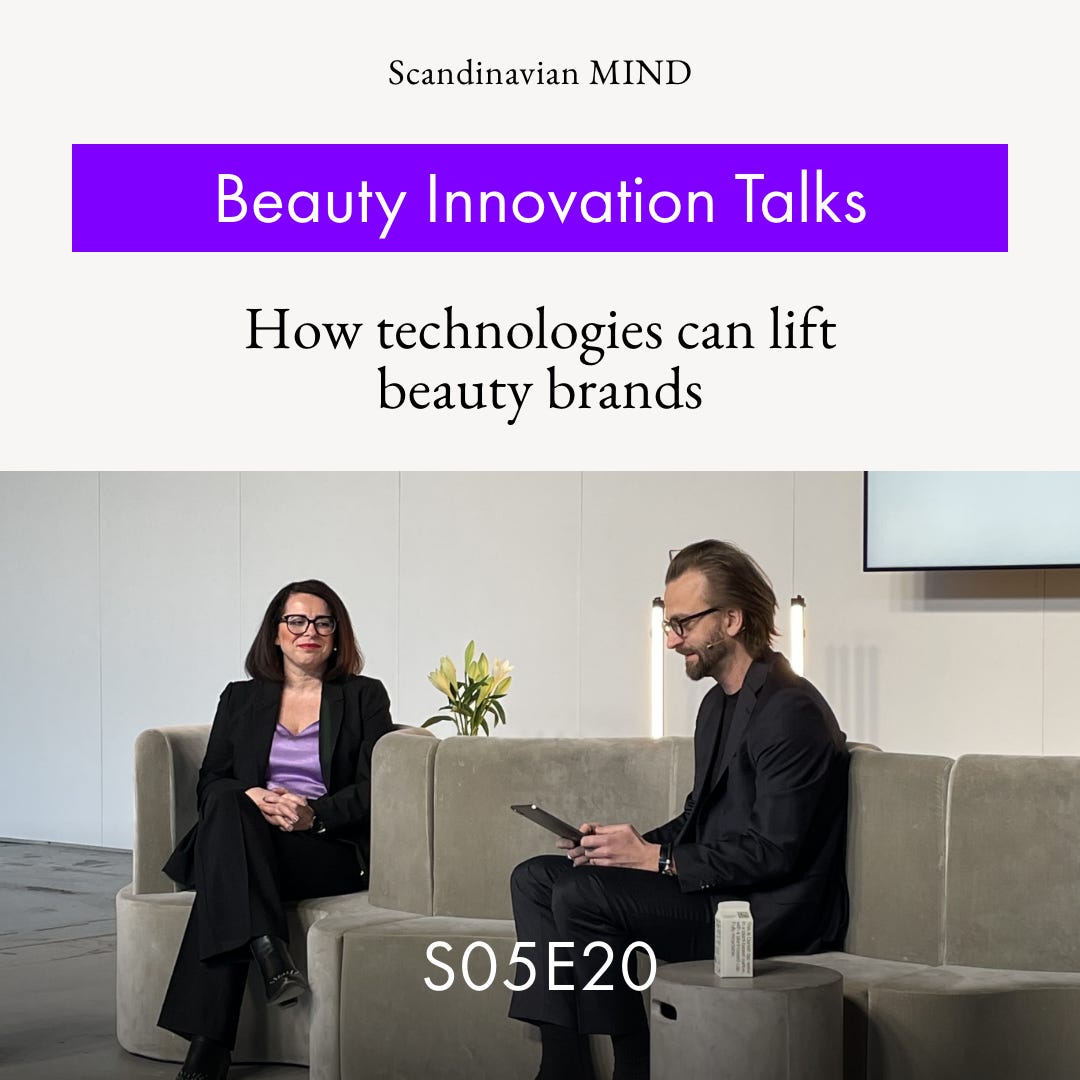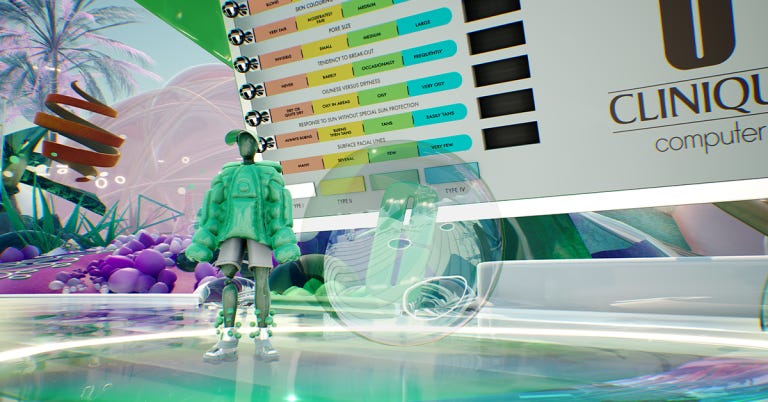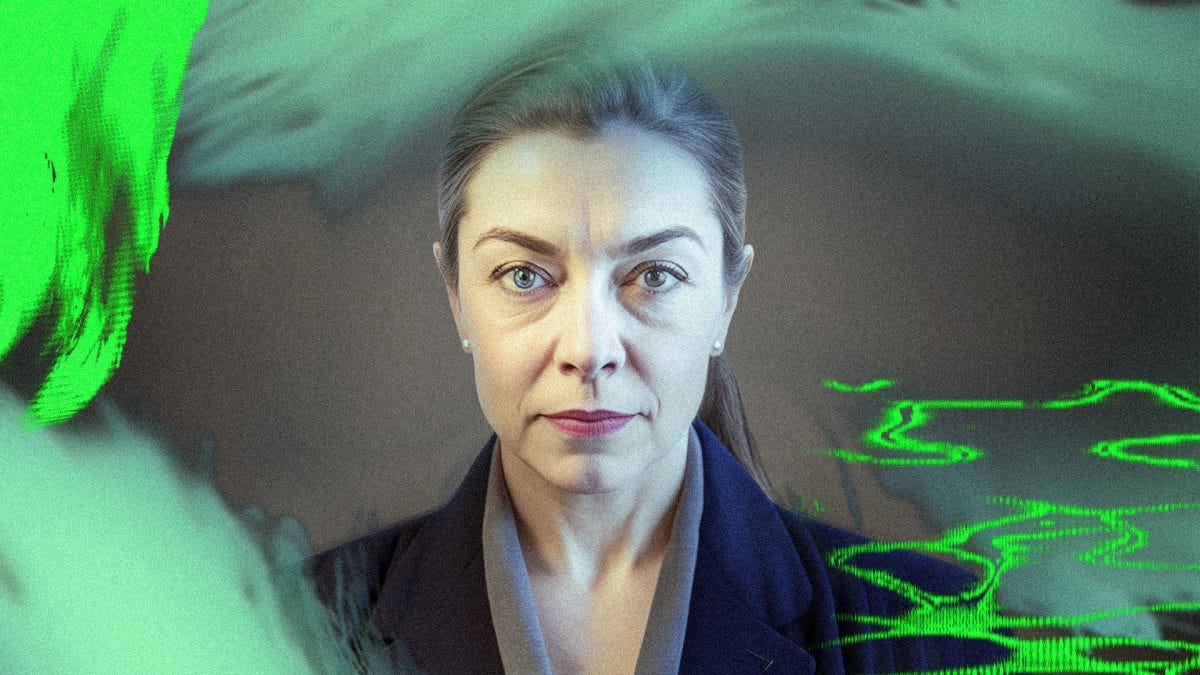The future of beauty is phygital
In this edition, we dive into one of the macro trends transforming the beauty industry; The virtual worlds. Plus: makeup in the metaverse and the rise of the AR consumer.
IN THIS ISSUE
How to navigate in the virtual worlds and the one buzzword to remember
The development of AR in different age groups
Makeup in the metaverse
How technology can lift beauty brands
”Metaverse as an experiment”
Virtually everything
What’s the future of beauty? Until now, it’s been grounded in inherently physical experiences — after all, beauty routines are deeply tangible. Moving forward, it’s going to be phygital. Our lives will be lived in both the physical and digital worlds, opening up endless possibilities and challenges for brands and industry players.
”Where beauty goes next within the metaverse is unclear, as the possibilities seem limitless. If brands have learnt anything from the launch of TikTok, it’s that early tech adopters stand the best chance of success.”
— mmi
According to some experts, the virtual world can remove the need for retailers. Already, leading beauty brands and disrupting startups alike are using so-called Virtual Try-Ons for consumers. When shopping for certain products online, the device’s camera shows what makeup products enabled for the feature will look like on either your own or your gaming avatar’s face.
Recent numbers by Allied Marketing Research projected that the global digital clothing market, including physical skins, digital skins, and the like, will reach almost $5 billion in 10 years. The signs are clear for a similar development for the beauty industry. A study published in the journal New Media and Society showed that viewers’ parasocial response to virtual influencers doesn’t differ significantly from their response to human influencers.
Last spring, Estée Lauder joined browser-based 3D world Decentraland as the beauty partner to the first-ever Metaverse Fashion Week.
”The metaverse is essentially limitless in terms of how one can express themselves through things like their avatars, and it’s this that will unlock more surreal beauty looks, new areas of inclusivity and abstract self-expression,” Jon Roman, SVP, Global consumer, marketing and online, told Harper’s Bazaar.
Or take NYX, the makeup brand that is leading the development in activating itself in the metaverse. Last December, the company turned to Roblox’s 58.8 million daily active users with the opening of House of NYX, presenting its Spring 2023 collection and offering users three limited-edition makeup looks to purchase for their avatars. Similarly, Swedish beauty-tech disruptor Foreo took to the virtual worlds and blockchain for the launch of its Luna 4 range, becoming the first skincare brand to launch a product as NFTs ahead of the conventional release. Each product in the collection had an NFT to represent it and each NFT had 50 designs, making a total of 250 limited edition NFTs in this world-first.
KEY TAKEAWAYS
The future of beauty is phygital
Virtual worlds offer a huge sales and marketing opportunity
”Virtual Try-Ons” is the buzzword to remember
Next week sees the unveiling of a new macro trend. See you then!
STAT OF THE WEEK
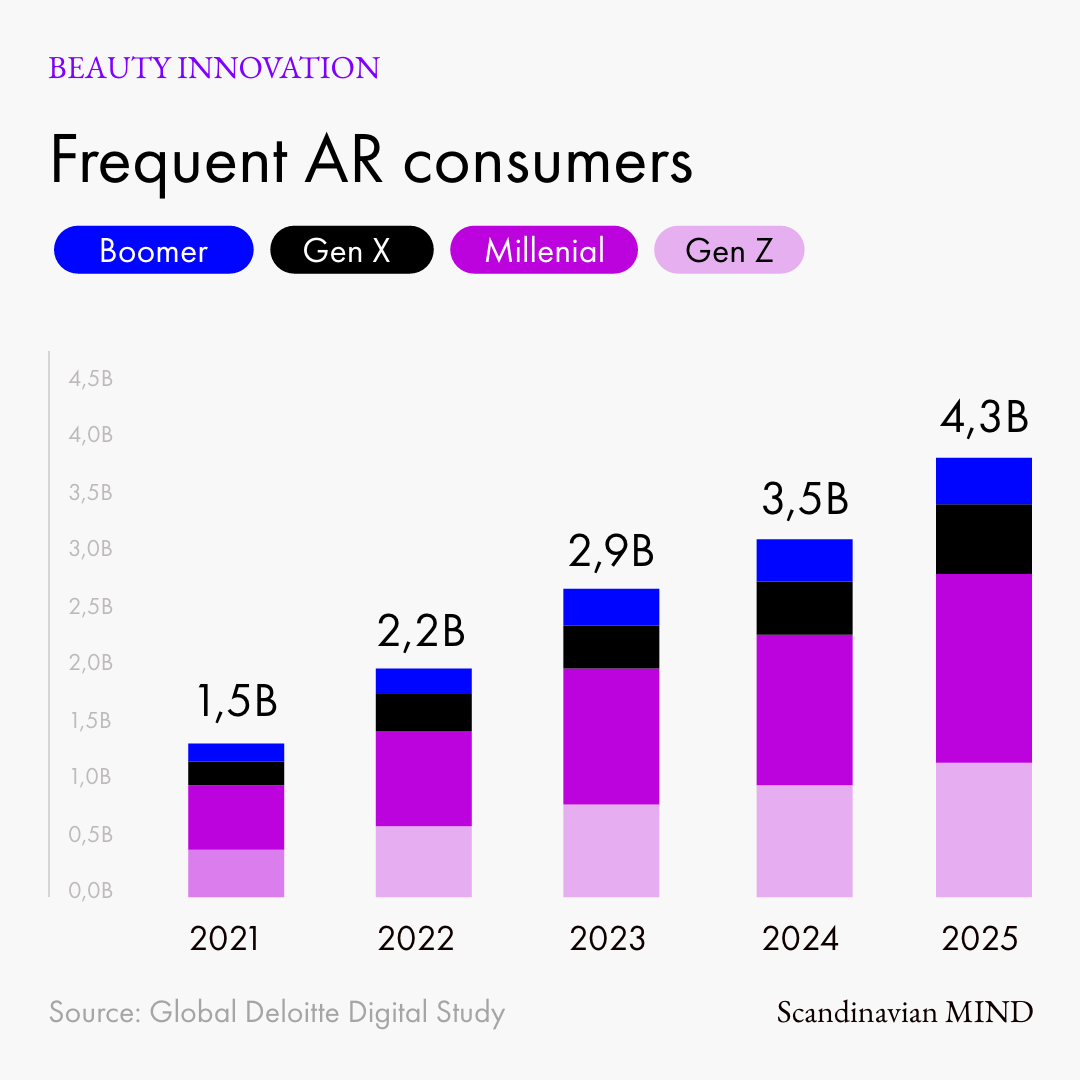
SCANDINAVIAN MIND X TRADE PARTNERS SWEDEN
Trade can be complex — but important help is just one click away
We speak to Helena Waker, CEO of Trade Partners Sweden, on why a strong network of experts is key when growing a beauty brand.
TOP STORIES
This season’s top stories, podcasts, and interviews from scandinavianmind.com
This comprehensive report investigates the rapidly shifting digital landscape and its impact on end-consumers
Diving into the future of social media and digital engagement.
Lush: ”We see the metaverse as an experiment”
We speak to Adam Goswell, Head of Technology R&D, on his impressions after the brand’s participation in the first-ever Metaverse Beauty Week.
How technologies can lift beauty brands
Episode 20, season 5 of our weekly podcast show on how technology is transforming the creative industries.
Clinique mimics iconic beauty counter for the opening of metaverse retail experience
An open, virtual world creates challenges and opportunities, according to Charmi Panchal, Executive Director of the brand’s Global Ecommerce.
INTERVIEW
Top tips and tricks for makeup artists in the metaverse
By ERIK SEDIN
Experienced makeup artist Katarina Håkansson is leaving supermodels and global fashion magazines behind. Instead, she wants to master her craft in virtual settings on avatars.
Katarina Håkansson has four decades worth of experience in the beauty industry, boasting makeup gigs for some of the world’s biggest fashion photographers and luxury houses from the early 90s and onwards. Since the turn of this decade however, her makeup station is neatly packed away to give way to her computer, where Katarina explores beauty in virtual worlds with the MetaHuman Creator from Epic Games.
— I previously worked around the globe as a top makeup artist. I founded my own beauty brand and have worked as a creative beauty lead based in Paris and New York. But the older I get the more I realise how little I know and how much I want o learn; I’ve studied artificial intelligence at Uppsala University and Immersive Technologies at Blekinge Institute of Technology, and I am an immersive experience student at Futuregames in Stockholm, specialising in XR, AR, and VR.
What is the future of beauty tech?
— With my background in the beauty sector, my passion lies in the development and research around avatars. I believe everyone will have one or several avatar options, depending on individual moods and occasions in the future. I find the possibility of our identity becoming more fluid and inclusive — regarding gender, race, background, age, size, and so forth — very compelling. It can hopefully help increase acceptance in a positive way in real life.
Even though Katarina spends most of her time in virtual reality settings, she still gathers inspiration and shares her own work through household social media like Discord, LinkedIn, and Instagram. Since her first experimentations with the MetaHuman Creator in 2021, Katarina’s Instagram followers surged.
— I naturally keep my eyes and ears out for all beauty and avatar-related matters on all platforms. The NFT markets are inspirational since there are so many talented creative people showing their work, she says, adding:
— The big beauty brands are already looking at opportunities in the metaverse and finding their place in it by collaborating with tech companies. L’Oréal has recently teamed up with the avatars from Ready Player Me for instance. I recently met an avatar in the form of a purple ball of threads with eyes in a VR chatroom and became curious about who was behind this creation. It turned out we had a lot in common.
Since her first stumbling steps with Unreal Engine, Katarina is still looking for more.
— I am currently a bit of a generalist, in the process of carving out my own personal workflow and identifying the tools I feel comfortable with. So far, I have been learning about real-time game engines like Unreal Engine but also Maya from Autodesk for 3D modelling and the Adobe suite. They all have steep learning curves. I recently found exciting XR tools that are very intuitive and user-friendly within VR and played around with stable diffusion using machine learning and artificial intelligence, which gives fascinating results. I am still searching.




